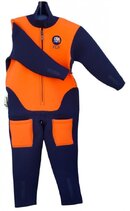oldflounder
Contributor
- Messages
- 543
- Reaction score
- 76
- # of dives
- 200 - 499
I was just curious if anyone has tried SNUBA through a hole. Would keeping the tank topside in a warm bin of water prevent freeflows? I am not recommending this as a way to ice dive. I can just see a possible application in situations such as doing a vehicle recovery in shallow [5 - 8'] of water where you can almost stand up but you must get underwater to do the hookups. Not having a tank on would also help maneuverability[sp?] around the vehicle under there. Of course you would still have a small pony attached/hung somewhere. This might also be applicable to doing repairs on circulation pumps at the docks/ship/etc. I am not talking recreational diving here.





